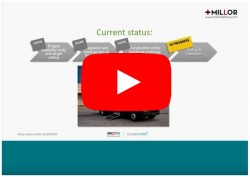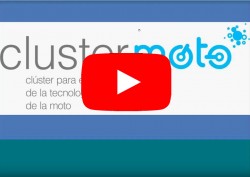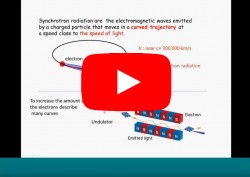
On the 23rd of January, secpho launched a new webinar focused on «Photonics for batteries manufacturing» among the speakers we had research centres and industry. The session was held in English and it was one of the most technical presentations we’ve made so far because all the presentations tried to look deeper into how laser technology represents a key tool for batteries production.
This is an absolutely topical issue, because market observers predict that by 2025 one in four new cars worldwide will be electrically powered and that the electromobility market share for 2030 will be between 50 and 75 percent. Due to this imminent emergence of electric mobility, high-performance battery cells are of great importance. Increased gravimetric and volumetric energy density, as well as reduced production costs, are crucial for greater market penetration. To achieve these goals, understanding the manufacturing processes of lithium-ion batteries is essential. Work is also underway on the manufacturing of conventional lithium-ion batteries with novel materials such as silicon compound anodes, as well as research on the production of solid-state batteries with metallic lithium anodes. This webinar was organised with the collaboration of clustermoto.
After the overview that offered Álex Turpin, Scientific Consultant of secpho, Julio Gállego López, Bussiness Developer Manager at Rutronik, and member of clustermoto, offered his presentation «Rutronik solutions for the mobility of electric vehicles«. He started explaining that we need different solutions for different problems, for example, Lithium and Ni-Cad Batteries for long operations, and Supercaps for short yet fast operation/high peak power. Meanwhile Carbon electrode is the key element for ultracapacitors, manufactured via laser cutting, Supercaps are very useful in hybrid heavy weight systems, like bus or tram. Therefore this is a growing market that can have appications from automotive, transportation, grid and renewal energy or industry.
Aleix Gabarró, R&D Project Manager at Millor Battery, and member of clustermoto, offered the presentation «Smart modular batteries for motorbikes and microcars» were he pointed out how markets differ from lightweight vehicles to heavyweight vehicles and motorsport and how we head towards a longest life, safer, lowest weight batteries worldwide. And he made an special mention to their project with small electric buses.
Mikel Bengoa, Team Leader High Power Laser Source Sales Europe at Coherent, started his explanation «Lasers for batteries manufacturing«, explaining light beams in all the processes of the battery production: structuring materials, electrodes cutting, welding of the elements, and cleaning and marking. Then he focused on ultrafast (femtosecond) that allow coating and material processing without melting and how lasers allow welding speeds of 150mm/s and penetration up to 1mm.
Ainara Rodriguez, Researcher at CEIT, offered her presentation «Ultrashort Pulsed Lasers for Battery Cells Manufacturing«. She explained that Ultrafast lasers are good for polymers and metals with high thermal conductivity and improve cell perfomance safety and pointed out that Surface structuring of Li-ion cells with lasers improves their performance.
Salvador Ferrer, senior scientist at Alba Synchrotron, titled his speech «The study of batteries at the ALBA Synchrotron and future perspectives» that was focused on how synchrotron radiation allows studying batteries materials at the most fundamental level in terms of structure and time scales. And also how very high-resolution tomography (shape) of the particles can ve useful in analysing battery performance.
Dr. Ashley Black, from ICMAB-CSIC offered the presentation «The use of synchrotron radiation in battery research» where he pointed out that the cell design must be tailored for the applications, because the design of the cells improves battery performance. And showed that synchrotron radiation-based research indicates that new batteries based on different materials (for instance Calcium) will improve battery performance.
The session lasted approximately two hours and almost 30 attendees were connected and enriched it with their questions and comments.
We thank everyone, speakers and attendees, for their interest in participating in this webinar, and for those who did not have the opportunity to attend, you can watch the following videos:
1. Welcome and presentation of the webinar. Álex Turpin secpho:
2. Rutronik solutions for the mobility of electric vehicles. Julio Gállego López – Clustermoto and Rutronik:

3. Smart modular batteries for motorbikes and microcars. Aleix Gabarró – Clustermoto y Millor Battery:
4. Clustermoto
5. Laser for batteries manufacturing. Mikel Bengoa – Coherent
6. Ultrashort Pulsed Lasers for Battery Cells Manufacturing. Ainara Rodríguez – CEIT
7. The study of batteries at the ALBA Synchrotron and future perspectives. Salvador Ferrer – ALBA Synchrotron
8. The use of synchrotron radiation in battery research. Ashley Black – ICMAB- CSIC
9. Conclusions by Álex Turpin










